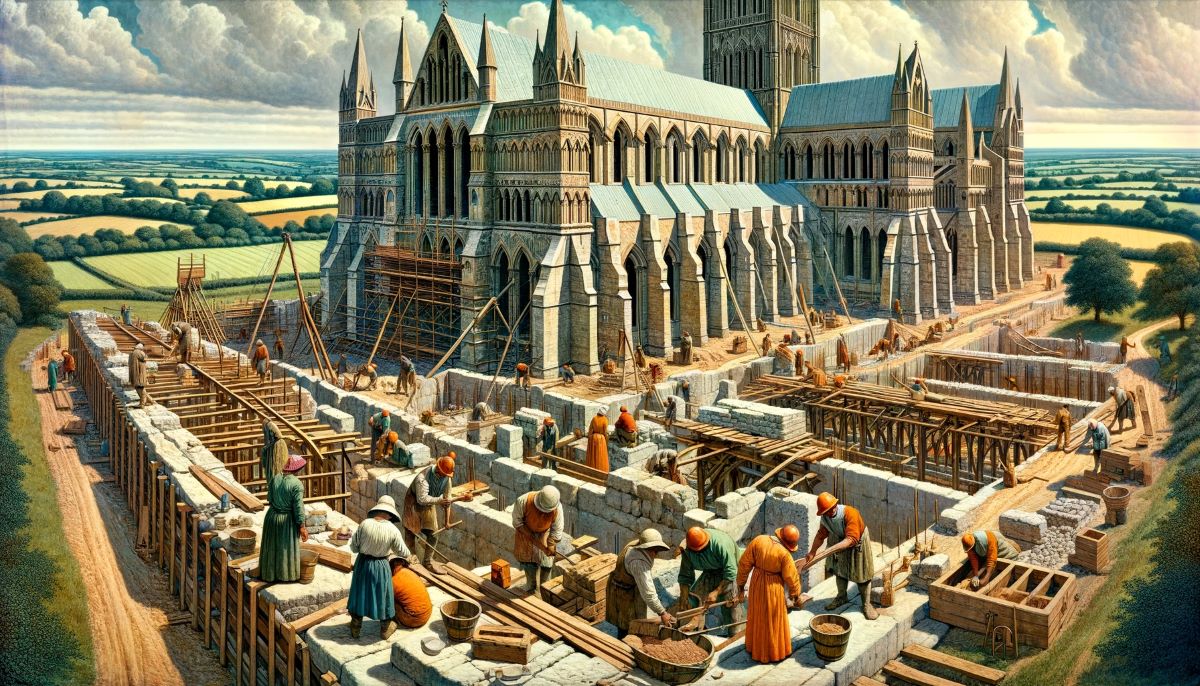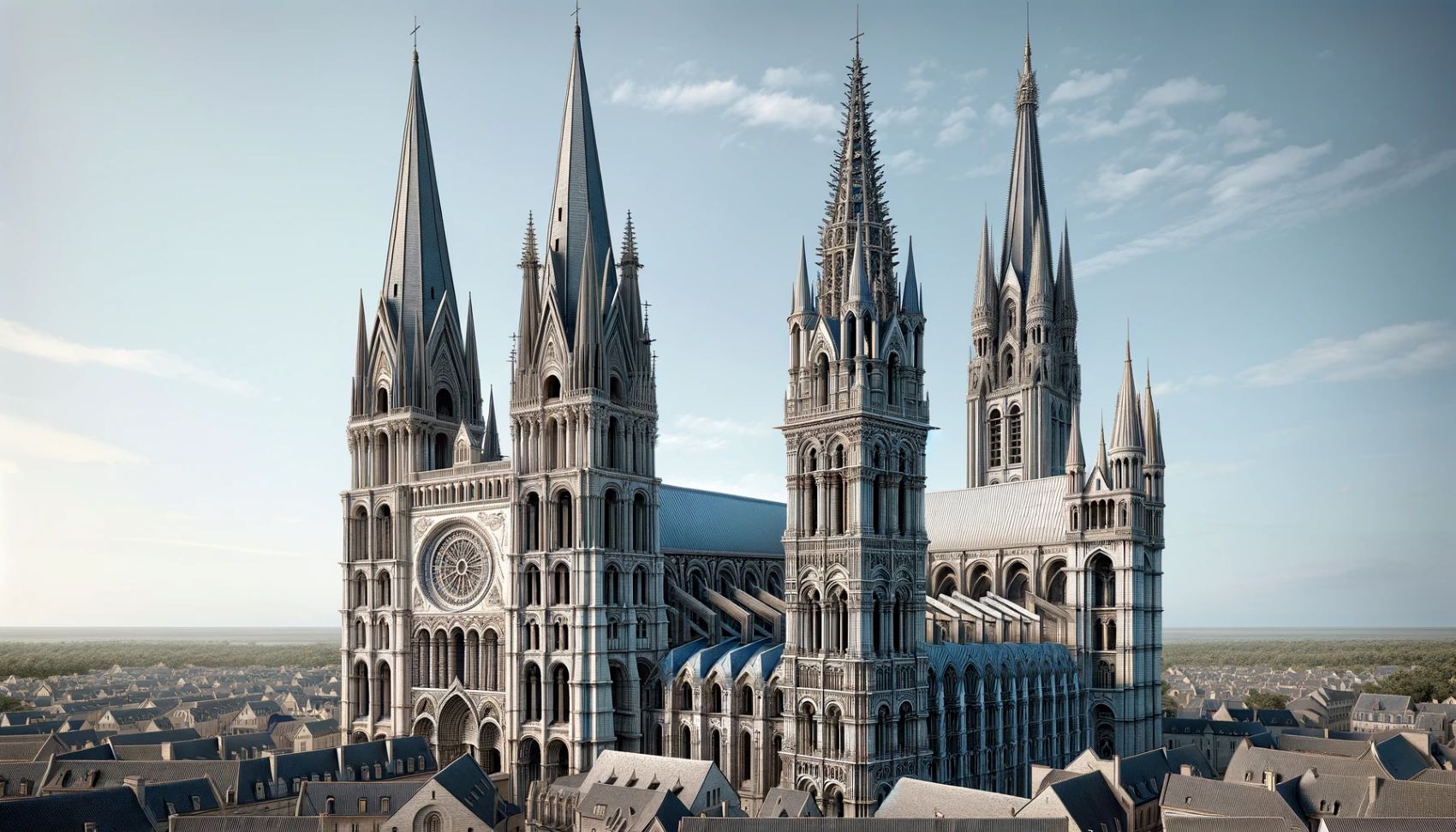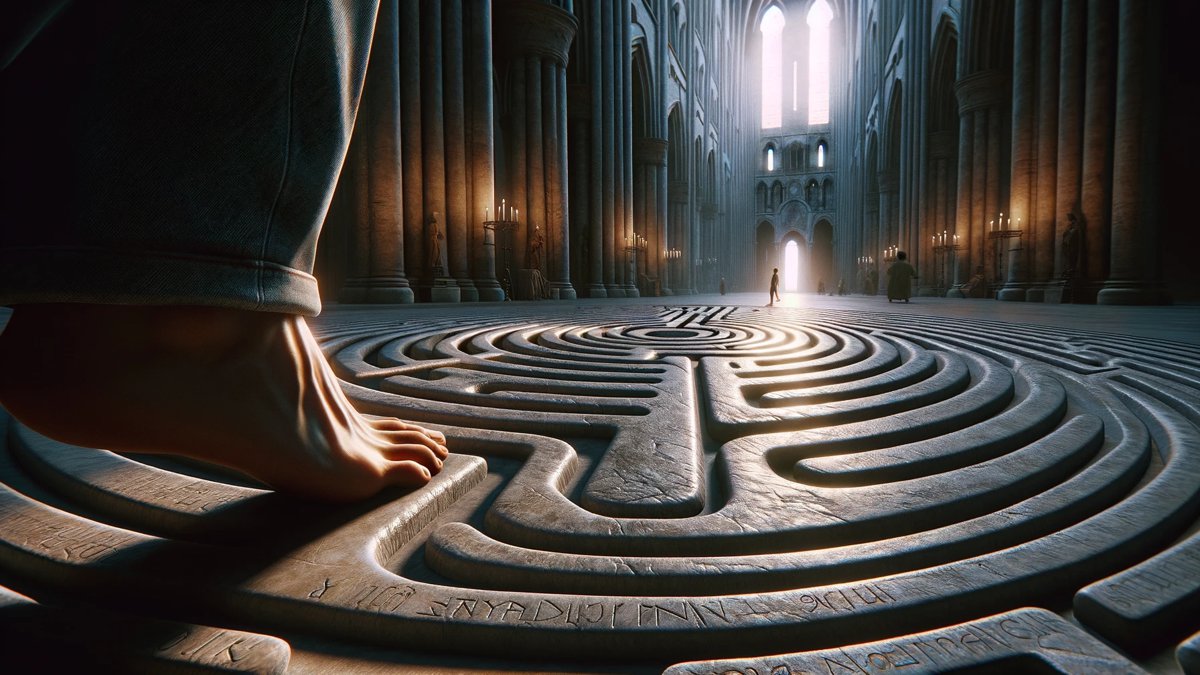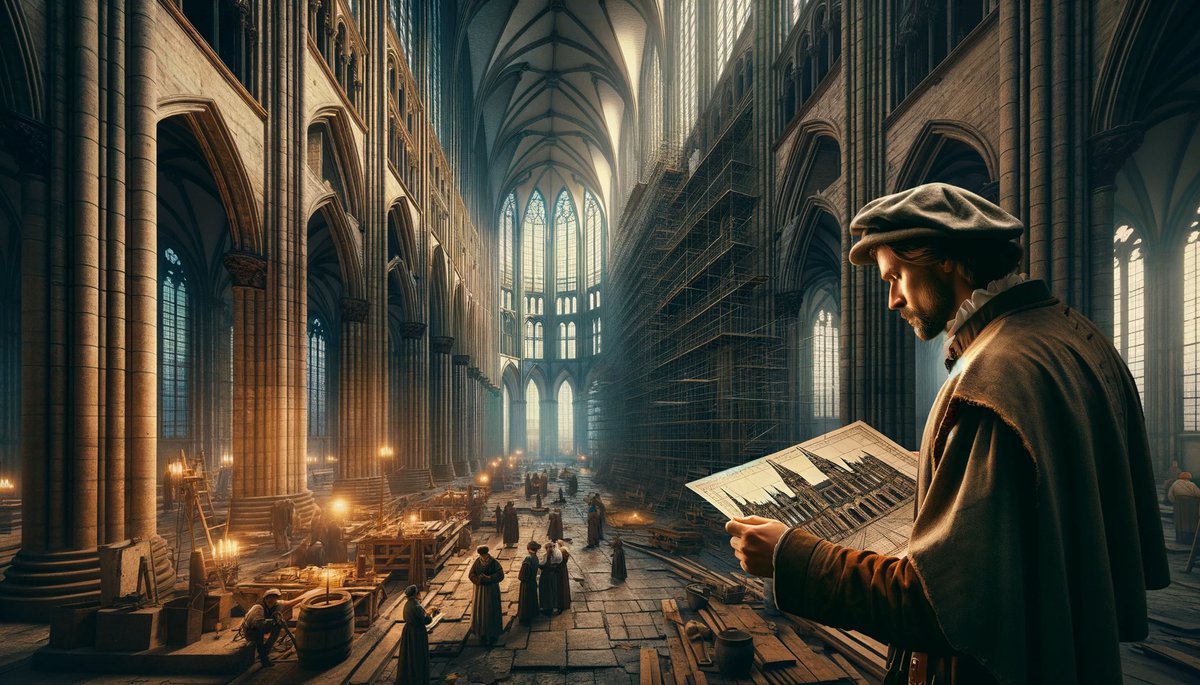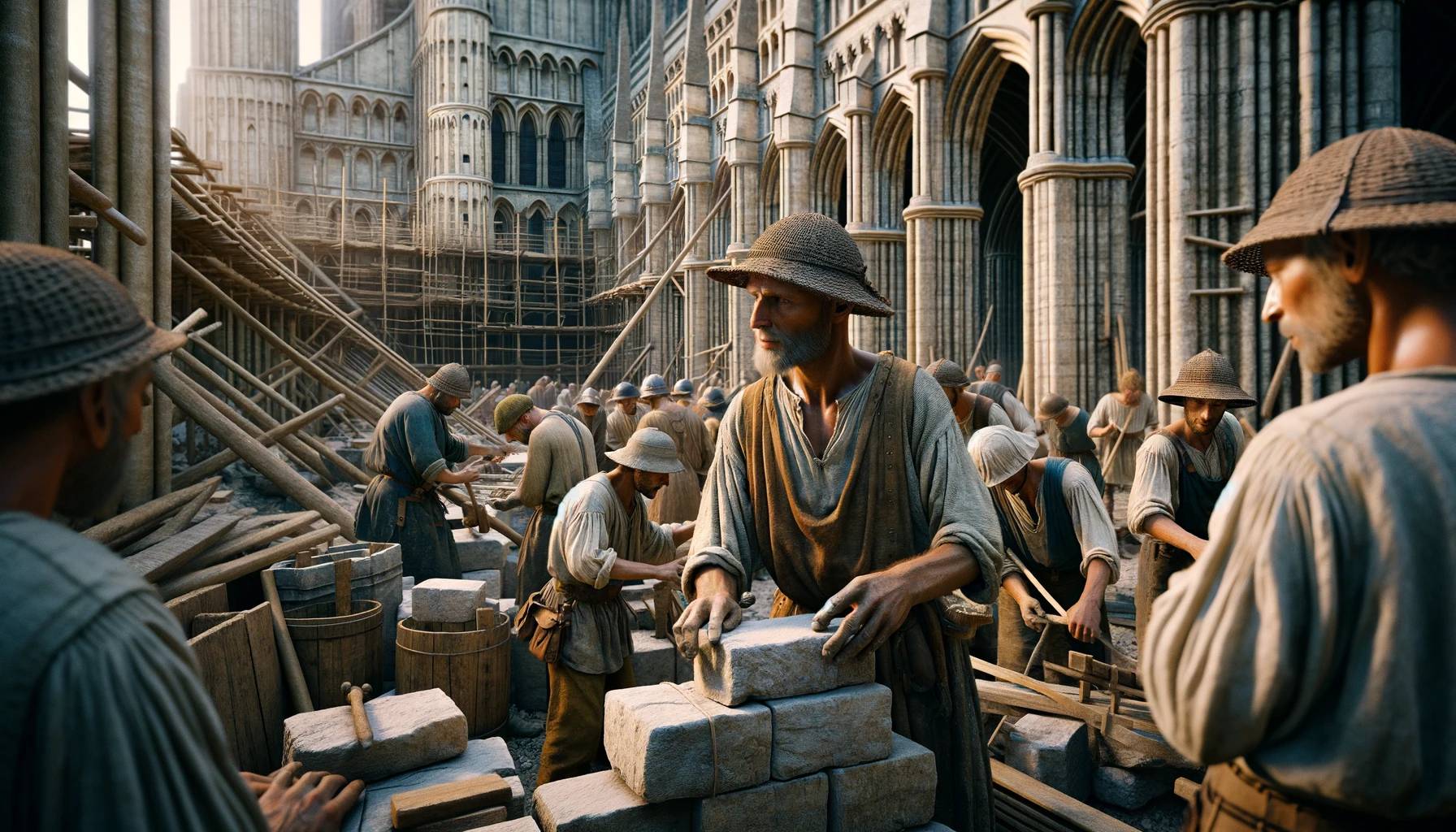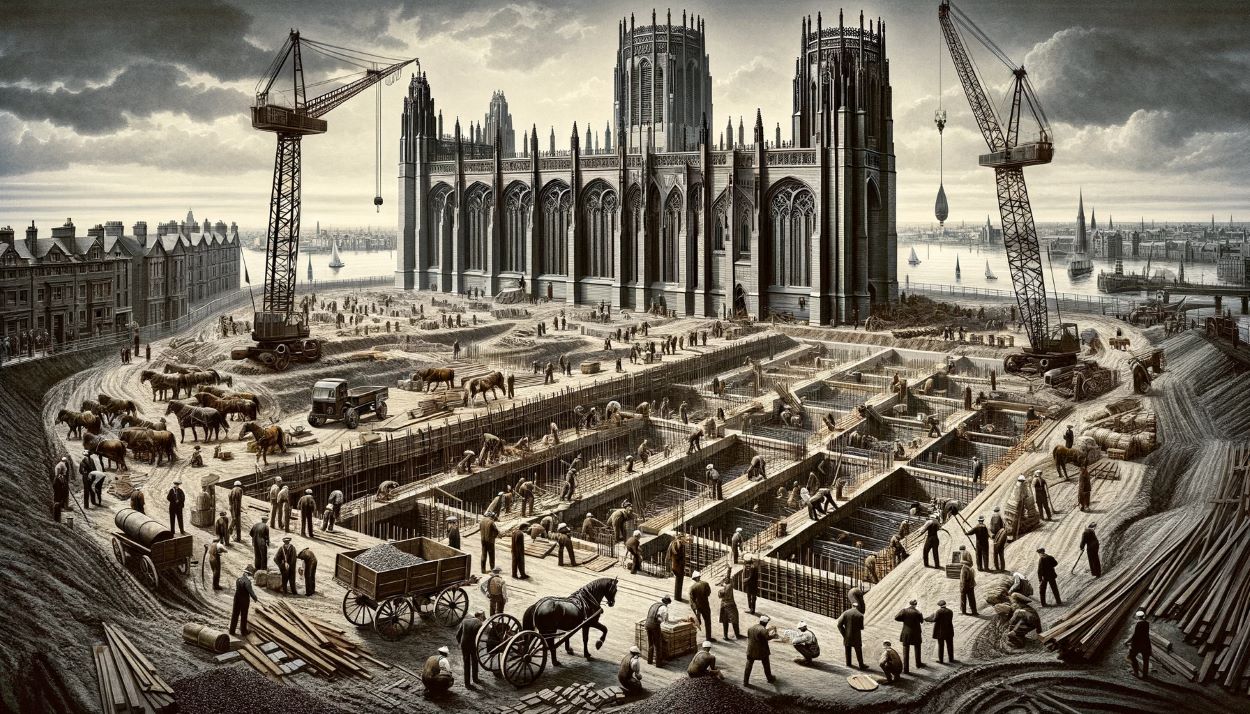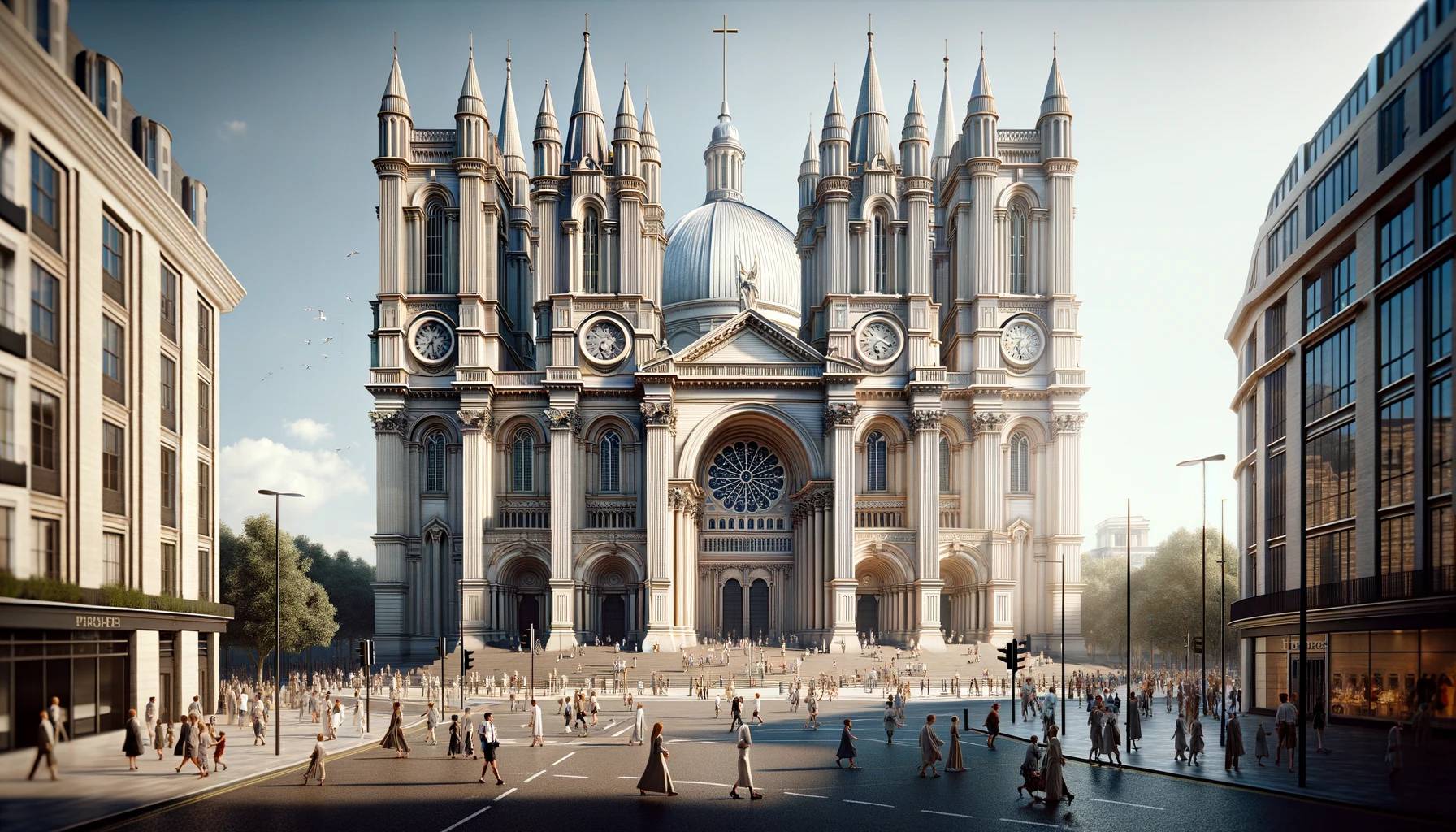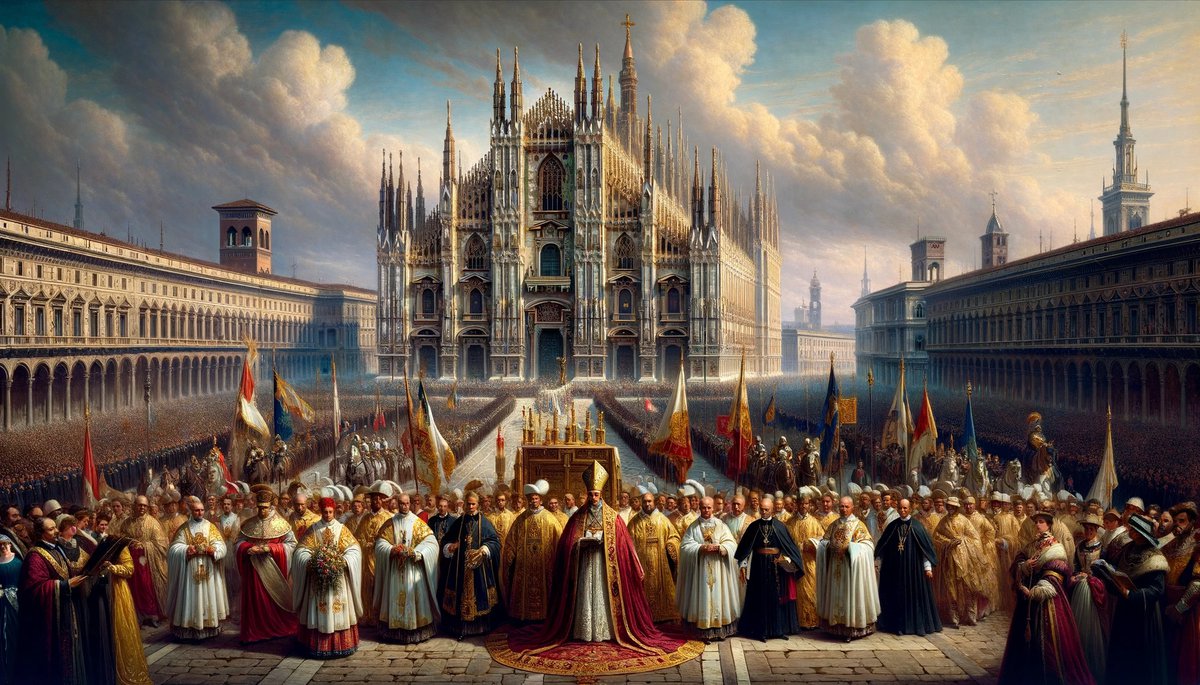Home>Arts and Culture>How Was Chartres Cathedral Built
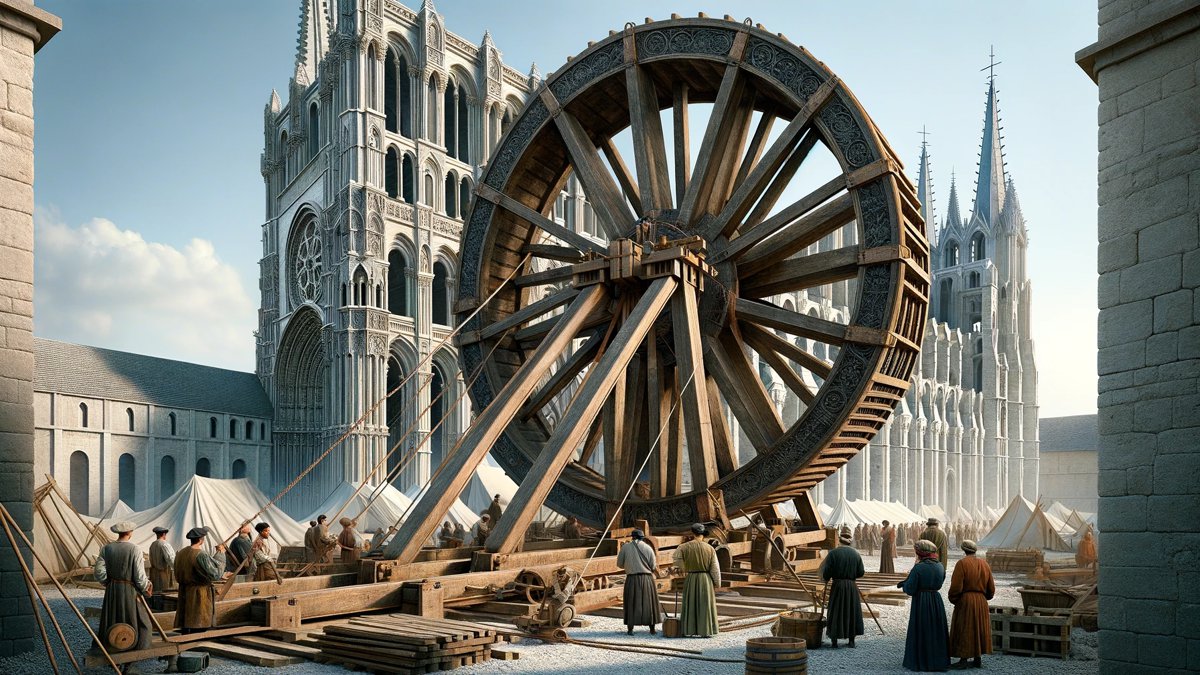

Arts and Culture
How Was Chartres Cathedral Built
Published: February 17, 2024
Jason DeRose, Managing Editor at Christian.net, uses his expertise in religion and journalism to deepen understanding of faith's societal impacts. His editorial leadership, coupled with a strong academic background, enriches the platform’s diverse content, earning him recognition in both journalism and religious circles.
Discover the fascinating history of Chartres Cathedral and learn about the intricate construction techniques that were used to build this iconic masterpiece in the realm of arts and culture. Uncover the secrets behind the architectural marvel of Chartres Cathedral and its enduring legacy.
(Many of the links in this article redirect to a specific reviewed product. Your purchase of these products through affiliate links helps to generate commission for Christian.net, at no extra cost. Learn more)
Table of Contents
Introduction
Chartres Cathedral, a masterpiece of Gothic architecture, stands as a testament to the ingenuity and craftsmanship of medieval builders. Located in the picturesque town of Chartres, France, this awe-inspiring structure has captivated visitors for centuries with its soaring spires, intricate stained glass windows, and imposing facade. The cathedral's construction, which began in the 12th century, represents a remarkable feat of engineering and artistic achievement that continues to inspire wonder and admiration.
As we delve into the history of Chartres Cathedral, we will uncover the remarkable story of its creation, exploring the design, construction process, materials used, and the pivotal roles played by master builders and the community. By understanding the intricacies of its construction, we gain a deeper appreciation for the cathedral's significance as a cultural and architectural treasure.
Chartres Cathedral stands as a living testament to the creativity and dedication of the artisans and laborers who brought this monumental vision to life. Through this exploration, we will gain insight into the profound impact of this architectural marvel on the cultural and spiritual landscape of medieval Europe, and its enduring legacy in the modern world.
Read more: Why Was The Chartres Cathedral Built
The Design and Layout of Chartres Cathedral
The design and layout of Chartres Cathedral exemplify the pinnacle of Gothic architecture, characterized by its soaring heights, pointed arches, and intricate ornamentation. The cathedral's layout follows the traditional cruciform plan, with a long nave intersected by a transept, forming the shape of a cross. This layout symbolizes the Christian belief in the crucifixion of Jesus Christ and serves as a visual representation of the spiritual journey from earthly life to heavenly salvation.
The cathedral's interior is marked by a sense of verticality, with towering columns and ribbed vaults that draw the eye upward, creating a profound sense of awe and transcendence. The use of pointed arches and flying buttresses allows for expansive windows, flooding the interior with ethereal light and creating a heavenly atmosphere. The stained glass windows, renowned for their vibrant colors and intricate designs, serve as a visual narrative of biblical stories and Christian teachings, captivating the faithful and visitors alike.
The facade of Chartres Cathedral is adorned with sculpted portals, depicting scenes from the Bible and intricate detailing that reflects the craftsmanship of the artisans. The west rose window, a stunning example of Gothic tracery, serves as a focal point, radiating a kaleidoscope of colors and patterns that mesmerize all who behold it.
The labyrinthine layout of the cathedral invites contemplation and reflection, guiding visitors through a spiritual journey as they traverse the nave, ambulatory, and chapels. The harmonious proportions and meticulous attention to detail in the design reflect the medieval belief in the divine order and the pursuit of perfection in earthly creations.
Chartres Cathedral's design and layout not only showcase the technical prowess of the medieval builders but also embody the spiritual aspirations of the Christian faith. Its architectural elements harmoniously blend to create a space that transcends the material world, inviting visitors to experience a profound sense of wonder and reverence. The enduring legacy of Chartres Cathedral lies in its ability to inspire awe and contemplation, serving as a timeless testament to the power of human creativity and spiritual devotion.
The Construction Process
The construction of Chartres Cathedral was a monumental undertaking that spanned several decades, requiring meticulous planning, skilled labor, and unwavering dedication. The process began in the early 12th century, with the demolition of the previous church on the site to make way for the grand vision of the new cathedral. The construction process can be divided into several key phases, each representing a remarkable achievement in medieval engineering and craftsmanship.
The foundation and groundworks laid the groundwork for the cathedral's structural integrity, with laborers excavating trenches and laying the stone foundation upon which the massive edifice would rise. Skilled stonemasons and laborers quarried limestone from nearby quarries, shaping each stone with precision to fit into the intricate network of walls, columns, and vaults. The construction of the cathedral's soaring walls and vaulted ceilings required a sophisticated understanding of geometry and engineering, as well as innovative techniques such as the use of flying buttresses to support the weight of the structure and allow for expansive windows.
The construction process also involved the installation of the cathedral's iconic stained glass windows, a feat that required the expertise of master glaziers who meticulously crafted and assembled the vibrant glass panels. These windows not only served as a source of illumination but also conveyed biblical narratives and religious symbolism, enriching the spiritual experience of the cathedral's visitors.
The intricate sculptural details adorning the facade and interior of the cathedral were meticulously carved by skilled artisans, infusing the structure with a rich tapestry of religious imagery and decorative motifs. The construction process was a collaborative effort that brought together a diverse array of craftsmen, including carpenters, metalworkers, and painters, each contributing their specialized skills to bring the cathedral to life.
As the construction progressed, the cathedral became a focal point of community life, with the townspeople actively participating in the building process through financial contributions, labor, and a shared sense of pride in the monumental undertaking. The cathedral's construction process was not merely a technical endeavor but a communal endeavor that united the townspeople in a collective effort to create a symbol of faith and cultural identity.
The completion of Chartres Cathedral marked the culmination of a remarkable construction process that exemplified the collective ingenuity and dedication of medieval builders and artisans. The cathedral stands as a testament to the enduring legacy of human creativity and the timeless beauty of Gothic architecture, inviting visitors to marvel at the awe-inspiring achievements of the past.
The Materials Used
The construction of Chartres Cathedral relied on a carefully selected array of materials, each chosen for its durability, aesthetic appeal, and structural integrity. The primary material utilized in the cathedral's construction was limestone, sourced from quarries in the vicinity of Chartres. This limestone, known for its strength and workability, served as the foundational building block of the cathedral, forming the sturdy walls, columns, and vaults that define its imposing structure. The use of limestone not only provided a robust foundation for the cathedral but also imparted a warm, honey-colored hue to the exterior, lending the edifice a timeless and ethereal quality.
In addition to limestone, the construction of Chartres Cathedral incorporated a diverse range of materials to fulfill specific architectural and decorative requirements. The cathedral's soaring spires and intricate tracery were crafted from lead, a malleable metal that allowed for the creation of delicate, filigree-like details that adorned the exterior of the structure. The use of lead in the cathedral's construction not only facilitated the creation of ornate decorative elements but also contributed to the structural stability of the roof and spires, ensuring their longevity and resilience against the elements.
The interior of Chartres Cathedral is adorned with a breathtaking display of stained glass windows, a defining feature of Gothic architecture. These windows, comprising vibrant, translucent glass panels, were meticulously crafted using a combination of silica sand, soda ash, and metallic oxides to achieve a diverse palette of colors. The glass panels were then assembled using lead cames, or strips, to form intricate designs that depicted biblical narratives and religious symbolism. The use of stained glass not only bathed the cathedral's interior in a kaleidoscope of radiant hues but also served as a powerful medium for conveying spiritual narratives and inspiring contemplation among the faithful.
Furthermore, the construction of Chartres Cathedral incorporated timber, sourced from the surrounding forests, to create the intricate wooden framework that supported the vaulted ceilings and roof. The use of timber, a readily available and versatile material, allowed for the creation of elaborate trusses and supports that complemented the cathedral's grand architectural design while providing essential structural reinforcement.
The meticulous selection and utilization of these materials underscore the innovative spirit and technical expertise of the medieval builders who brought Chartres Cathedral to fruition. The harmonious integration of limestone, lead, glass, and timber not only contributed to the cathedral's structural integrity but also endowed it with a timeless beauty that continues to captivate visitors from around the world.
The Role of the Master Builders
The construction of Chartres Cathedral was made possible through the visionary leadership and technical expertise of master builders, who played a pivotal role in overseeing every aspect of the cathedral's creation. These master builders, often revered as architectural geniuses, were responsible for translating the grand design of the cathedral into a tangible reality, employing their advanced knowledge of engineering, geometry, and construction techniques to orchestrate the monumental undertaking.
At the heart of the master builders' responsibilities was the coordination of a diverse workforce, including stonemasons, carpenters, glassmakers, and sculptors, among others. Their leadership ensured that each craftsman's specialized skills were harmoniously integrated into the construction process, resulting in a cohesive and awe-inspiring architectural marvel. The master builders' ability to communicate their vision and coordinate the efforts of the labor force was instrumental in maintaining the structural integrity and aesthetic coherence of the cathedral.
Moreover, the master builders were instrumental in implementing innovative architectural solutions that defined the Gothic style, such as the use of flying buttresses to support the cathedral's walls and allow for expansive windows. Their expertise in structural engineering and material science enabled them to push the boundaries of architectural design, creating a space that defied conventional limitations and inspired a sense of transcendence.
The role of the master builders extended beyond technical oversight; they were also entrusted with the spiritual and symbolic significance of the cathedral. As custodians of the cathedral's sacred purpose, they infused the architectural elements with profound religious symbolism, ensuring that every aspect of the structure reflected the spiritual aspirations of the Christian faith. The master builders' meticulous attention to detail and symbolic storytelling through architectural features contributed to the cathedral's role as a transcendent space for worship and contemplation.
In essence, the master builders of Chartres Cathedral were visionary leaders, technical innovators, and spiritual custodians, whose multifaceted role shaped the cathedral into a timeless masterpiece. Their legacy endures in the soaring spires, intricate tracery, and ethereal beauty of Chartres Cathedral, standing as a testament to the enduring impact of their expertise and creative vision.
Read more: Where Is The Chartres Cathedral
The Role of the Community
The construction of Chartres Cathedral was not solely the endeavor of skilled artisans and master builders; it was a communal effort that engaged the entire town of Chartres and its surrounding regions. The community played a pivotal role in the realization of this architectural marvel, contributing in diverse and meaningful ways that extended beyond mere financial support.
From the outset, the townspeople of Chartres demonstrated an unwavering commitment to the cathedral's construction, recognizing it as a symbol of collective faith and identity. Their contributions, both financial and labor-related, were instrumental in sustaining the ambitious building project. Through voluntary donations and fundraising initiatives, the community rallied together to provide the necessary resources for the procurement of materials, the payment of skilled laborers, and the overall sustenance of the construction efforts.
Beyond financial support, the community actively participated in the physical labor required for the cathedral's construction. Men, women, and even children from all walks of life volunteered their time and energy, working alongside skilled craftsmen to quarry stone, transport materials, and assist in the myriad tasks essential to the building process. This collective involvement not only accelerated the pace of construction but also fostered a profound sense of ownership and pride among the townspeople, who viewed the cathedral as a tangible expression of their shared devotion and communal spirit.
The cathedral's significance extended beyond its role as a place of worship; it served as a unifying symbol that brought the community together, transcending social and economic divides. The shared vision of creating a monumental testament to faith and artistry united individuals from diverse backgrounds, forging a sense of solidarity and common purpose that permeated every aspect of daily life in Chartres.
Moreover, the community's engagement with the cathedral extended into the realm of spiritual devotion. The townspeople actively participated in religious ceremonies, processions, and rituals that were intricately woven into the fabric of the cathedral's construction. Their fervent belief in the cathedral's sacred purpose imbued the building process with a profound spiritual significance, elevating it beyond a mere architectural endeavor to a deeply meaningful expression of faith and reverence.
In essence, the role of the community in the construction of Chartres Cathedral was multifaceted and profound. Their collective contributions, whether through financial support, physical labor, or spiritual devotion, underscored the cathedral's status as a communal achievement, a testament to the enduring legacy of human creativity and collaboration. The cathedral stands as a living testament to the enduring legacy of human creativity and the timeless beauty of Gothic architecture, inviting visitors to marvel at the awe-inspiring achievements of the past.
The Significance of Chartres Cathedral
Chartres Cathedral holds profound significance as a cultural, spiritual, and architectural treasure that transcends the boundaries of time and space. Its enduring legacy resonates through centuries, captivating visitors with its awe-inspiring beauty and profound symbolism. The cathedral's significance can be understood through multiple lenses, each shedding light on its enduring impact on the cultural and spiritual landscape.
From an architectural standpoint, Chartres Cathedral stands as a pinnacle of Gothic innovation, showcasing the mastery of medieval builders in harmonizing structural integrity with ethereal beauty. Its soaring spires, intricate tracery, and labyrinthine layout exemplify the technical prowess and artistic vision of the master builders, setting a standard for Gothic architecture that continues to inspire awe and admiration. The cathedral's design, characterized by a sense of verticality and luminous stained glass windows, creates an immersive and transcendent space that invites contemplation and spiritual reflection.
Spiritually, Chartres Cathedral holds profound significance as a sacred pilgrimage site and a testament to the enduring power of faith. For centuries, pilgrims have journeyed to Chartres to pay homage to the cathedral's revered relic, the Sancta Camisa, believed to be the tunic worn by the Virgin Mary at the time of Christ's birth. The cathedral's sacred relics, including the revered Black Madonna, have drawn pilgrims seeking solace, healing, and spiritual renewal, fostering a profound sense of connection to the divine and the miraculous.
Culturally, Chartres Cathedral serves as a living repository of medieval art, craftsmanship, and religious devotion. Its sculpted portals, vibrant stained glass windows, and intricate carvings bear witness to the creative genius of artisans who sought to convey profound religious narratives and moral teachings through their craft. The cathedral's role as a center of artistic and cultural expression has enriched the collective heritage of humanity, inspiring generations with its timeless beauty and spiritual resonance.
Moreover, Chartres Cathedral's significance extends into the realm of global heritage, as it has been recognized as a UNESCO World Heritage Site, underscoring its universal value as a testament to human creativity and spiritual aspiration. Its enduring legacy continues to inspire scholars, artists, and visitors from around the world, fostering a deep appreciation for the intersection of faith, art, and architecture.
In essence, the significance of Chartres Cathedral transcends its physical presence, encompassing its role as a beacon of architectural innovation, a sacred pilgrimage site, a cultural treasure, and a universal symbol of human creativity. Its enduring legacy invites us to marvel at the profound achievements of the past and to contemplate the timeless beauty of this architectural masterpiece.


